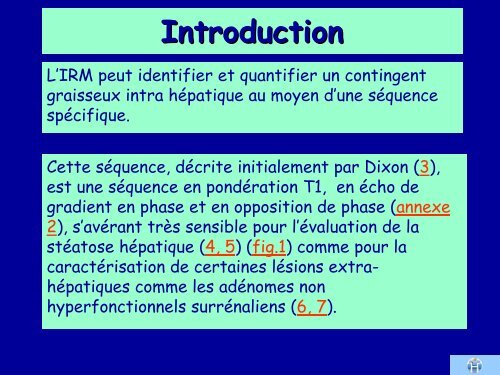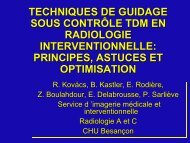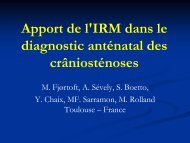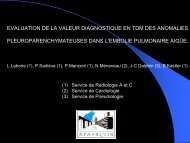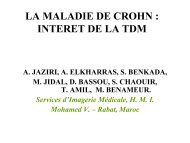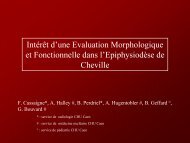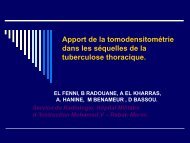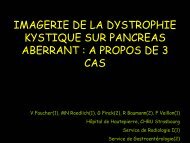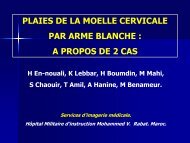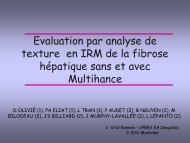La séquence d'IRM en phase et en opposition de phase permet-elle ...
La séquence d'IRM en phase et en opposition de phase permet-elle ...
La séquence d'IRM en phase et en opposition de phase permet-elle ...
You also want an ePaper? Increase the reach of your titles
YUMPU automatically turns print PDFs into web optimized ePapers that Google loves.
IntroductionL’IRM peut id<strong>en</strong>tifier <strong>et</strong> quantifier un conting<strong>en</strong>tgraisseux intra hépatique au moy<strong>en</strong> d’une séqu<strong>en</strong>cespécifique.C<strong>et</strong>te séqu<strong>en</strong>ce, décrite initialem<strong>en</strong>t par Dixon (3),est une séqu<strong>en</strong>ce <strong>en</strong> pondération T1, <strong>en</strong> écho <strong>de</strong>gradi<strong>en</strong>t <strong>en</strong> <strong>phase</strong> <strong>et</strong> <strong>en</strong> <strong>opposition</strong> <strong>de</strong> <strong>phase</strong> (annexe2), s’avérant très s<strong>en</strong>sible pour l’évaluation <strong>de</strong> lastéatose hépatique (4, 5) (fig.1) comme pour lacaractérisation <strong>de</strong> certaines lésions extrahépatiquescomme les adénomes nonhyperfonctionnels surrénali<strong>en</strong>s (6, 7).


